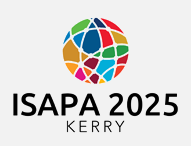Start Date
19-6-2025 10:30 AM
End Date
19-6-2025 12:00 PM
Abstract
Intro: Service-learning experiences enhance self-efficacy in undergraduate kinesiology students, preparing them to teach individuals with disabilities (IWD) through real-life experiences. Yet, few such courses exist, leading to issues like limited exposure to disabilities, lack of guidance in teaching IWD, and constrained funding and quality assurance (Narasaki-Jara et al., 2020; Santiago et al., 2016).
Purpose: To investigate undergraduate kinesiology (KIN) students’ self-efficacy toward working with IWD over an 8-week service-learning program.
Method: 35 undergraduate students (27 students did practicum experience in teaching various physical activities for IWD from the local community and 8 students never have practicum experience) completed a pre and post a 9-point Likert Teaching Students with Disabilities Efficacy Scale (Solomon and Scott 2013). Repeated measures ANOVA was utilized to analyze the data, with the significance level set at p < 0.05.
Results: No significant group x time differences in the intervention group and the control group. There was a trend of an increase in self-efficacy in the intervention group, with scores changing from m = 7.06 (pre) to m = 7.44 (post), while the control group experienced a decrease in self-efficacy, from m = 7.10 (pre) to m = 6.84 (post). Females showed an increase in self-efficacy, from m = 7.11 (pre) to m = 7.45 (post), while males showed a minimal increase, from m = 7.00 (pre) to m = 7.02 (post)
Conclusion: The study highlights the importance of service-learning programs in boosting self-efficacy for KIN students working with IWD.
Recommended Citation
Ichihara, Michihito; Simpson, Chloe; hansen, Ken; and Jara, Mai Narasaki, "The Impact of Service-learning on Undergraduate Kinesiology Majors’ Self-efficacy Toward Working with individuals with Disabilities" (2025). International Symposium of Adapted Physical Activity and International Symposium on Physical Activity and Visual Impairment and Deafblindness. 21.
https://sword.mtu.ie/isapa/2025/day4/21
The Impact of Service-learning on Undergraduate Kinesiology Majors’ Self-efficacy Toward Working with individuals with Disabilities
Intro: Service-learning experiences enhance self-efficacy in undergraduate kinesiology students, preparing them to teach individuals with disabilities (IWD) through real-life experiences. Yet, few such courses exist, leading to issues like limited exposure to disabilities, lack of guidance in teaching IWD, and constrained funding and quality assurance (Narasaki-Jara et al., 2020; Santiago et al., 2016).
Purpose: To investigate undergraduate kinesiology (KIN) students’ self-efficacy toward working with IWD over an 8-week service-learning program.
Method: 35 undergraduate students (27 students did practicum experience in teaching various physical activities for IWD from the local community and 8 students never have practicum experience) completed a pre and post a 9-point Likert Teaching Students with Disabilities Efficacy Scale (Solomon and Scott 2013). Repeated measures ANOVA was utilized to analyze the data, with the significance level set at p < 0.05.
Results: No significant group x time differences in the intervention group and the control group. There was a trend of an increase in self-efficacy in the intervention group, with scores changing from m = 7.06 (pre) to m = 7.44 (post), while the control group experienced a decrease in self-efficacy, from m = 7.10 (pre) to m = 6.84 (post). Females showed an increase in self-efficacy, from m = 7.11 (pre) to m = 7.45 (post), while males showed a minimal increase, from m = 7.00 (pre) to m = 7.02 (post)
Conclusion: The study highlights the importance of service-learning programs in boosting self-efficacy for KIN students working with IWD.

